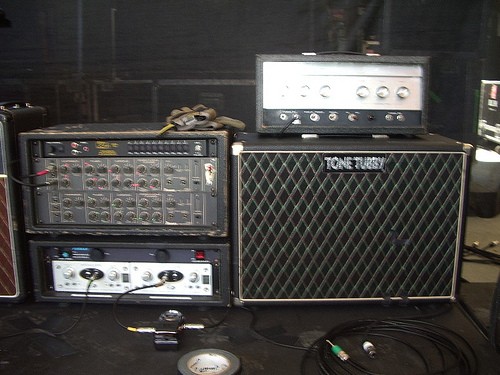Peter Buck, the iconic guitarist of R.E.M., crafted a sound that was as integral to the band’s identity as Michael Stipe’s enigmatic vocals or Mike Mills’ melodic basslines. For guitarists aiming to capture that jangly, distinctive R.E.M. tone, understanding Buck’s equipment and playing style is key. This exploration delves into the gear and techniques that define the sound of this influential guitarist.
Peter Buck’s Guitars: The Rickenbacker and More
Buck is most famously associated with his Rickenbacker guitars, particularly the 360 model. He acquired a blonde Rickenbacker 360 early in his career, which became his main instrument until it was stolen. Subsequently, he found a black Rickenbacker 360 that has been featured on nearly every R.E.M. record since their first single. He values the “clarity of tone” offered by these guitars, often keeping his black 360 readily accessible.
Beyond Rickenbackers, Buck has also utilized other guitars to achieve different sonic textures. He mentions playing a Telecaster in R.E.M.’s early days and using a Fender Telecaster thin-line with an f-hole for “rhythm and more rock ‘n’ roll loud stuff.” His collection also includes a Guild electric-acoustic and a Rickenbacker 360 twelve-string, expanding his sonic palette in the studio.
Amplification: Fender Twins and Mesa Boogies
For amplification, Buck’s setup has evolved over time. In the studio, he favors the classic Fender Twin Reverb amplifier, known for its clean and bright sound, which complements the jangly nature of his Rickenbackers. Live performances, however, see him utilizing a Simul-Class Mesa Boogie amplifier paired with a Sa/Boo 4×12” speaker cabinet, providing more power and stage presence.
Effects and Pedals: Subtle Enhancements
Buck’s approach to effects is relatively restrained, focusing on subtle enhancements rather than heavy processing. He has been known to use an Ibanez UE400 multi-effects unit, though he admits to not using it extensively. Specific effects he has employed include fuzz, notably on “Feeling Gravitys Pull,” and chorus, which he uses “every once in a while to get that little ringy sound.” A compressor is also part of his arsenal, used primarily to achieve feedback or noise effects.
Strings and Picks: Heavy Gauge and Nylon
A crucial element in Peter Buck’s guitar sound is his choice of strings and picks. He famously uses heavy gauge Dean Markley strings, a custom set starting at .013 on the high E string and going up to .056 for the low E. This heavier gauge, combined with a slightly high action, contributes to a more resonant and acoustic-like tone, as Buck himself notes: “The thicker the strings are, the more resonant tone you get, like an acoustic guitar.”
For picks, Buck favors red Dunlop nylon .73 mm picks, and has also been seen using yellow Dunlop nylon picks of unknown thickness. These nylon picks, combined with his string gauge and playing style, further shape his signature sound.
Picking Technique: Downstrokes and Arpeggios
Buck’s early guitar playing was characterized by a unique picking style. Initially, he did not employ alternate picking, instead relying on downstrokes or upstrokes for arpeggios, creating a “sweep-like” effect. While he later adopted a more traditional alternate picking style, this early technique contributed to the distinctive rhythmic drive of early R.E.M. songs. His approach to arpeggios, whether downstrokes or alternate picking, remains a recognizable feature of his playing.
Recreating the Peter Buck Sound
To emulate Peter Buck’s guitar sound, consider these key elements:
- Guitar: A Rickenbacker 360 or similar semi-hollow guitar will get you closest to his core tone. A Telecaster can also be used for a different flavor within the R.E.M. sound.
- Amplifier: A Fender Twin Reverb or a clean channel amplifier will provide the necessary clarity.
- Effects: Focus on subtle effects. Chorus, fuzz, and compression can be used sparingly.
- Strings: Experiment with heavier gauge strings to achieve a fuller tone. Dean Markley .013 gauge sets are a good starting point.
- Picks: Dunlop nylon .73 mm picks are a close match to Buck’s preference.
- Playing Style: Practice arpeggios and experiment with both downstroke-focused and alternate picking techniques.
By understanding and incorporating these elements, guitarists can begin to unlock the secrets behind the distinctive and influential guitar sound of R.E.M.’s Peter Buck.
